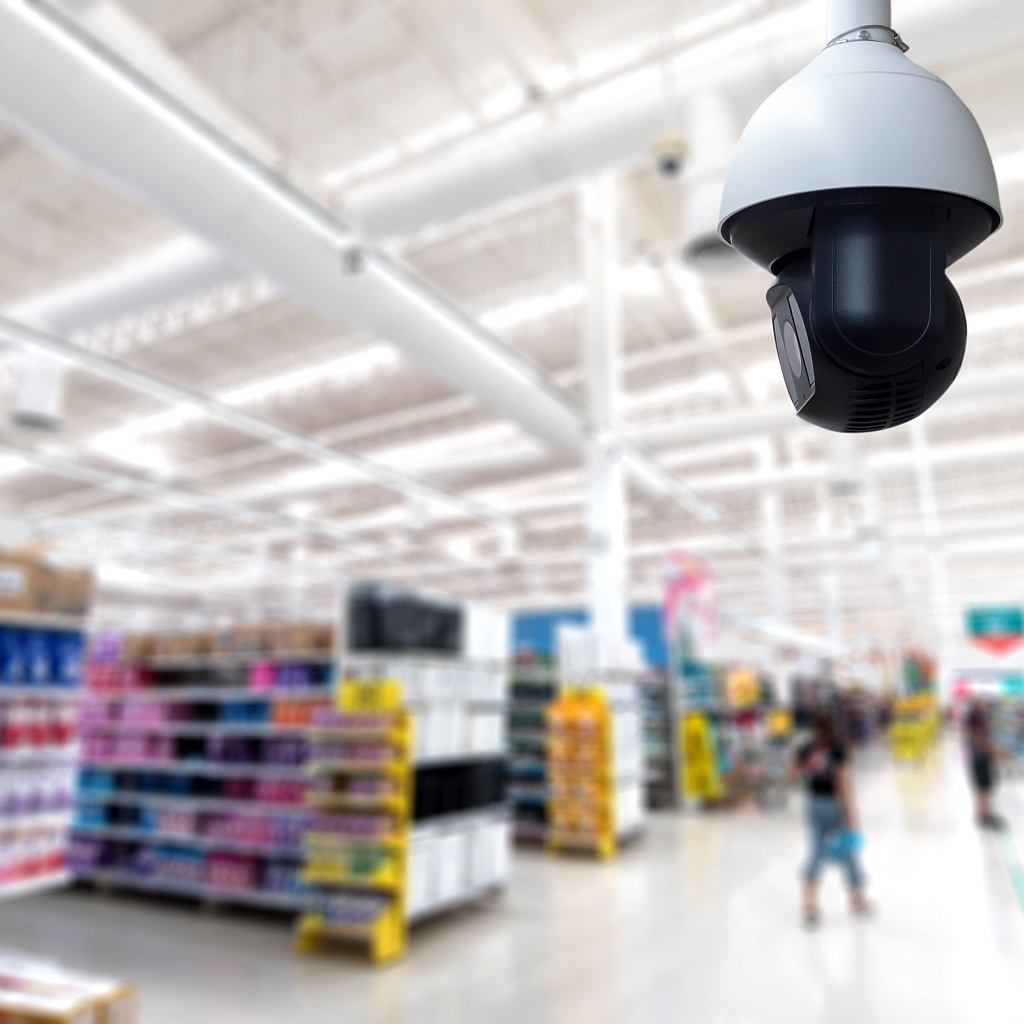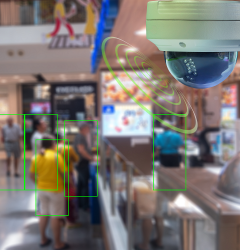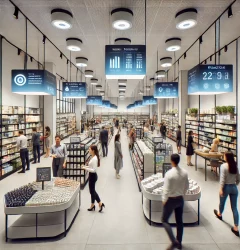Video Analytics
Understanding Your Customers Better: The Role of Footfall Counting in Retail Analytics
08 Jan

Understanding Your Customers Better: The Role of Footfall Counting in Retail Analytics
In today’s fast-paced retail environment, mastering the art of customer behavior analysis is crucial for success. This is where footfall counting, a transformative tool in retail analytics, plays a pivotal role. As a people counter technology, it offers more than just a tally of visitors; it provides a comprehensive understanding of how customers interact with a store. This invaluable data, gathered by sophisticated retail traffic counters, enables businesses to tailor their strategies, ensuring they meet the evolving needs and preferences of their customers. By leveraging this technique, retailers can delve deep into the nuances of customer behavior, uncovering patterns and trends that are essential for making informed business decisions. Footfall counting, thus, goes beyond mere numbers, offering a strategic lens through which retailers can view and enhance their customer engagement and store operations.
The evolution of people counting technology has been remarkable, transitioning from basic manual counts to advanced systems equipped with AI and machine learning capabilities. Modern footfall counters are designed to provide a plethora of insights, such as peak shopping hours, customer dwell times, and even repeat visit frequencies. This level of detail is invaluable in optimizing store layouts, staffing, and inventory management. For instance, by understanding peak traffic times through accurate customer counting, retailers can efficiently allocate staff, ensuring that customer service is optimized when it matters most. Furthermore, these insights assist in crafting targeted marketing campaigns, as retailers can align their promotional activities with customer traffic trends, maximizing the impact and ROI of their marketing efforts. However, the use of people counting technologies is not without its challenges. One of the key considerations is ensuring data accuracy and reliability. Retailers must choose footfall counting solutions that are known for their precision, as even slight inaccuracies can lead to misguided strategies and decisions. Additionally, with increasing concerns around privacy, it’s essential for retailers to employ people counters that respect customer privacy and comply with relevant data protection regulations. By addressing these challenges and harnessing the full potential of people counting and footfall analytics, retailers can unlock a deeper understanding of their customers, leading to enhanced customer experiences, increased sales, and sustained business growth in the competitive retail landscape.
Why is Footfall Counting Important?
Analyzing footfall data is a strategic tool that empowers retailers to identify key trends in customer visits. By pinpointing which days or specific times draw the most foot traffic, retailers gain essential insights for critical aspects of store management. This knowledge is particularly crucial for staffing decisions. With an understanding of peak customer influx times, retailers can optimize their staff schedules to ensure that the store is fully equipped to handle busy periods. This not only improves customer service during high traffic times but also aids in managing labor costs effectively. During slower periods, when customer count is lower, retailers can adjust by reducing staff hours, thereby saving on labor costs without compromising on customer service quality.
Furthermore, this data is invaluable for inventory management. By correlating sales data with footfall patterns, retailers can anticipate demand spikes and ensure that popular items are well-stocked during peak times. This proactive approach to inventory control helps avoid stockouts, a critical factor in maintaining customer satisfaction and loyalty. Additionally, footfall analytics can inform the timing of promotional activities. Retailers can schedule sales, special events, or product launches to coincide with periods of high customer traffic, thereby maximizing exposure and increasing the chances of higher sales volumes. In essence, footfall data analysis is not just about counting the number of customers entering a store; it’s a strategic approach to optimizing various operational aspects of retail management. By understanding and responding to customer traffic patterns, retailers can make informed decisions that enhance store efficiency, improve the customer shopping experience, and ultimately drive business growth.
Optimizing Retail Strategy: Sector-Based Footfall Analysis in Stores
Generating footfall data in-store by dividing the store into different sectors is a strategic approach that can provide retailers with granular insights into customer behavior and preferences. This method involves segmenting the store into distinct areas or departments, each monitored individually to gather specific footfall data. By employing this sector-based analysis, retailers can gain a deeper understanding of which areas attract the most customers, how long they spend in each section, and their movement patterns within the store. The first step in this process is to install people counting sensors in each designated sector. These sensors can range from basic infrared counters to more advanced solutions like video-based analytics systems. Each sector’s footfall data is then collected and analyzed separately. This detailed analysis allows retailers to identify not just the overall store traffic but also the specific appeal of each department. For instance, a retailer might discover that the electronics section attracts more visitors during certain times of the day or week, while the apparel section sees consistent traffic throughout the day.
This sector-based footfall analysis is immensely beneficial for several aspects of store management. For merchandising, it provides insights on where to place high-demand products or promotional displays. If a particular sector consistently shows higher footfall, it might be an ideal spot for showcasing new arrivals or sale items. In terms of layout optimization, this data can guide the rearrangement of departments to enhance customer flow and improve the overall shopping experience. For instance, placing complementary goods in adjacent sectors could increase cross-selling opportunities. Additionally, this approach can inform staffing decisions, ensuring that each sector is adequately staffed based on its specific traffic patterns. Generating footfall data by analyzing individual store sectors is a powerful technique for retailers. It not only helps in understanding the overall customer footfall but also provides insights into the performance and appeal of different store areas. By leveraging this data, retailers can make informed decisions to optimize product placement, store layout, staffing, and promotional strategies, all of which are crucial for enhancing customer satisfaction and driving sales.
Conclusion
The strategic application of footfall data extends to various facets of retail operations. From optimizing store layouts for a better shopping experience to adjusting staffing levels for maximum efficiency, the implications of accurate customer counting are extensive. Retailers can pinpoint high-traffic periods to plan effective marketing campaigns, align promotional activities with customer influx, and manage inventory more effectively. The insights derived from footfall analytics help in creating a more responsive, customer-focused retail environment, thereby enhancing customer satisfaction and loyalty. By leveraging people counting systems, retailers can ensure their stores are not just places of transaction but destinations that offer enjoyable and personalized shopping experiences. Embracing footfall counting technology is no longer just an option for retailers; it’s a necessity in the fiercely competitive retail sector. In a world where data is king, retailers who effectively utilize footfall analytics are well-equipped to understand and meet the needs of their customers. This proactive approach to customer understanding can significantly impact a retailer’s ability to innovate and stay relevant. Consequently, retailers who invest in and leverage advanced footfall counting and people counter technologies are more likely to thrive, carving out a distinct advantage in today’s customer-centric marketplace. This commitment to understanding and responding to customer behavior through footfall data is what sets successful retailers apart, paving the way for sustained growth and profitability.
Related Post
Tags
Keywords
Tags
Resources
© 2020-2024 Link Retail. All rights reserved.











